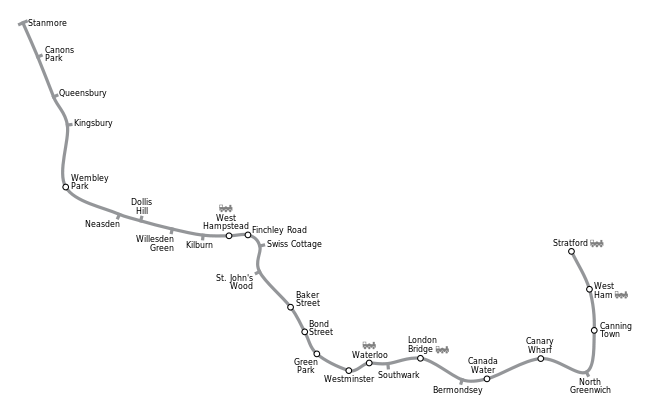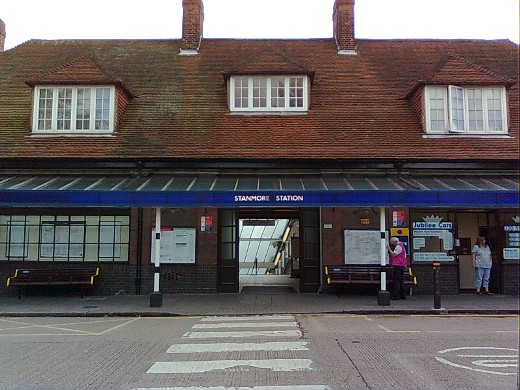
Stanmore station was opened in 1932 as the terminus to a branch of the Metropolitan line. Seven years later the branch was transferred to the Bakerloo line and Stanmore station became the terminus to the Jubilee line in 1979.
|
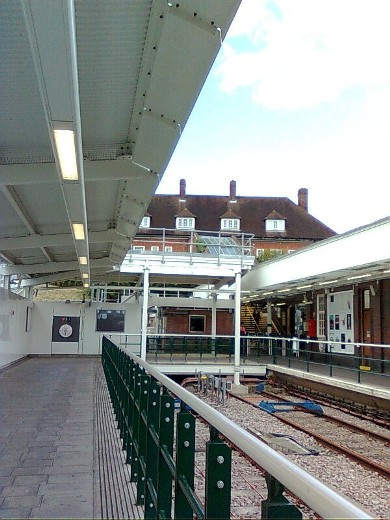
Looking up to the station building from the platform, the two joined by a set of stairs, the perspex covering of which can be seen joined to the building. Unusually, the ticket hall is not in the upper station building but down at platform level.
|
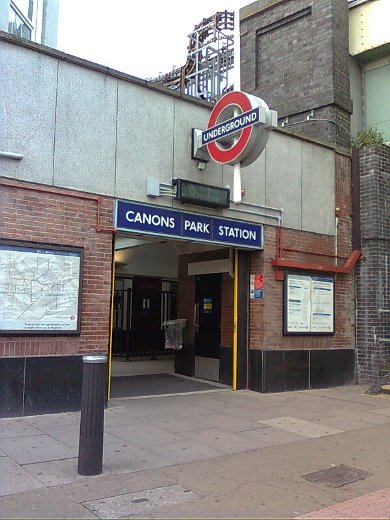
Canons Park station, originally called Canons Park (Edgware) although the bracketed part was very quickly dropped.
|
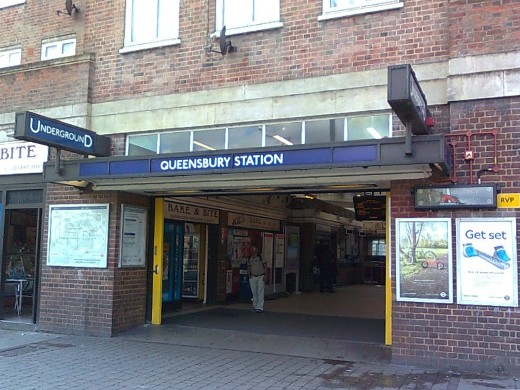
Queensbury station opened in 1934, two years after the neighbouring stations on the line. Note the 1930s style writing with the large U and D on the Underground sign.
|
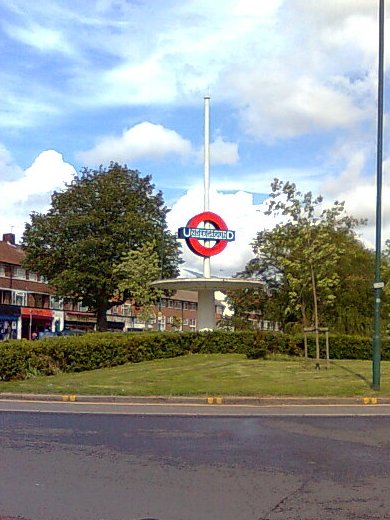
On the roundabout in front of the station stands an artistic Underground sign.
|
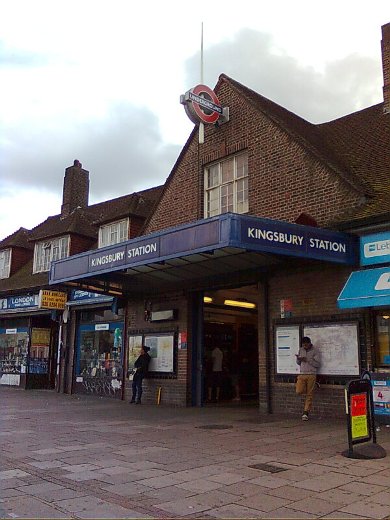
Kingsbury Station.
|
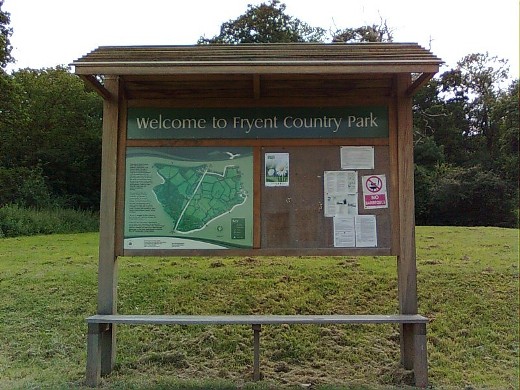
The walk to the next station follows a busy road which cuts through the centre of Fryent Country Park. The entrance is half way along the road.
|
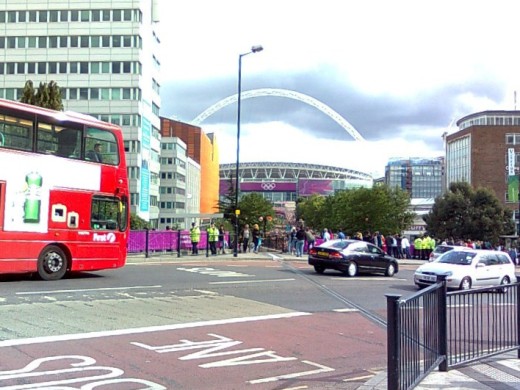
Just before the next station we get a view of the stadium where an Olympic football match has just been played. The Olympic rings can just be seen on the front.
|
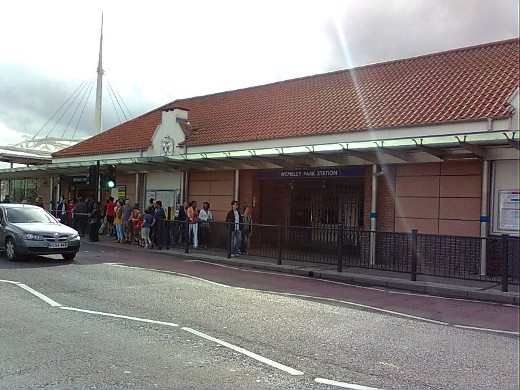
Wembley Park station opened in 1893. The old station building dated 1923 is still in use connecting inside with the new extension built on the left down the hill.
|
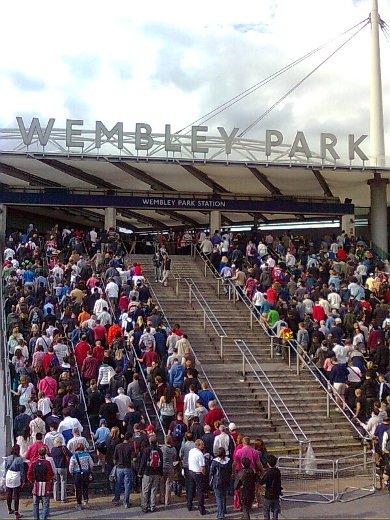
The new station entrance built to cope with the large number of people visiting the nearby Wembley Stadium and Arena.
|
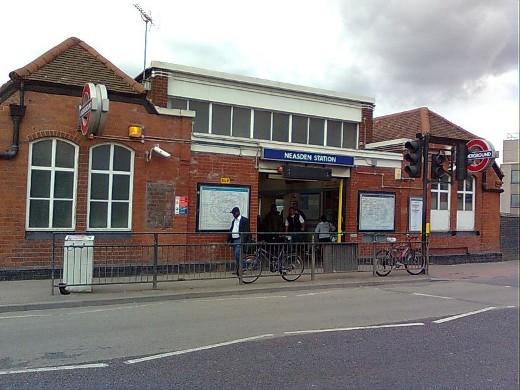
Neasden station opened in 1880 as Kingsbury & Neasden. The name was changed to Neasden & Kingsbury in 1910, and simply Neasden in 1932 when Kingsbury station opened. The platform buildings are the original 1880 buildings.
|
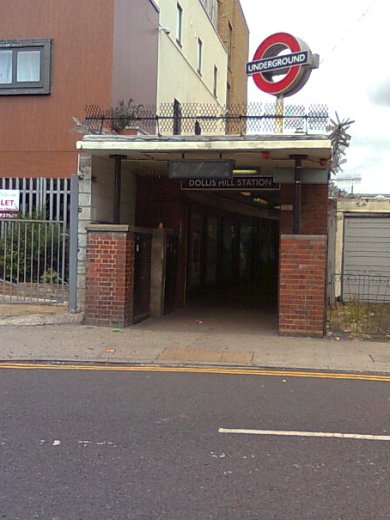
Dollis Hill station opened in 1909. There are two entrances joined by a subway. The picture shows the southern entrance.
|
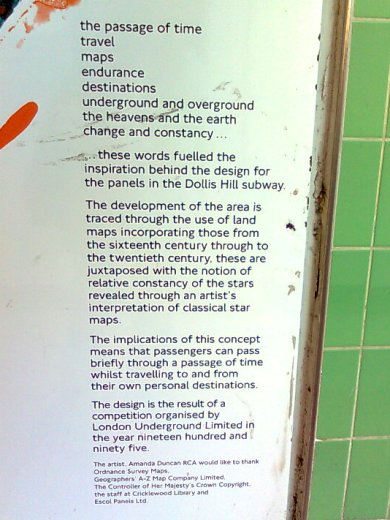
In 1995 enamel panels were installed in the Dollis Hill station subway between the north and south entrances together with a description of the work.
|
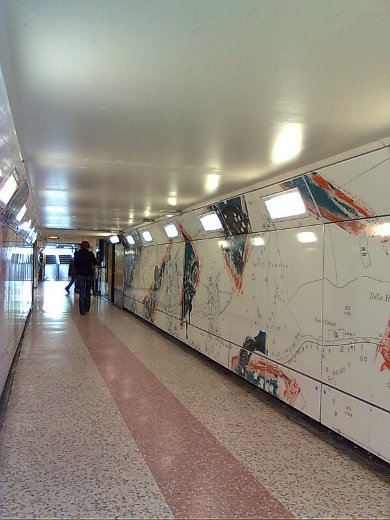
The art work on both sides of the subway.
|
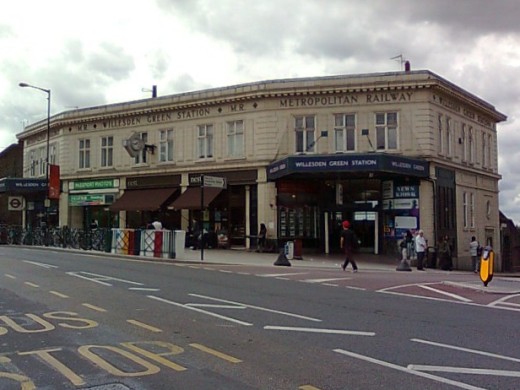
Willesden Green station was opened in 1879. The beautiful station building, a typical Charles W Clark design similar to others on the old Metropolitan line, was built in 1925.
|
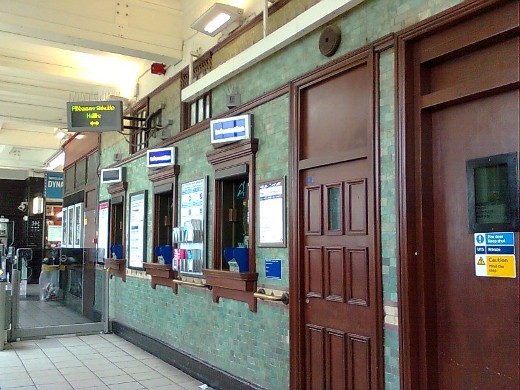
The ticket hall interior retains much of the original green mosaic tiling. The platform buildings are the original 1879 buildings.
|
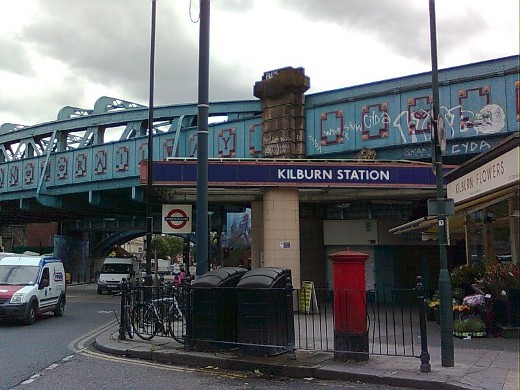
Kilburn station sited on a viaduct crossing the road. It was called Kilburn & Brondesbury until 1950. The lettering on the bridge reads 'Metropolitan Railway' and the date '1914'.
|
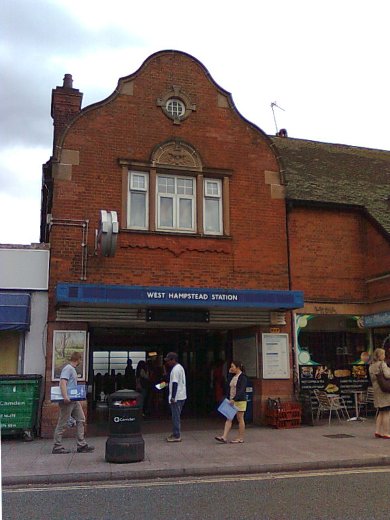
West Hampstead station.
|
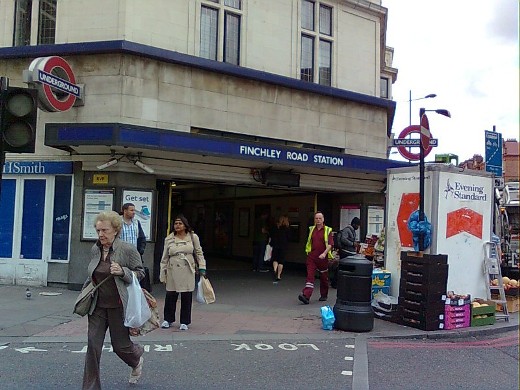
Finchley Road station.
|
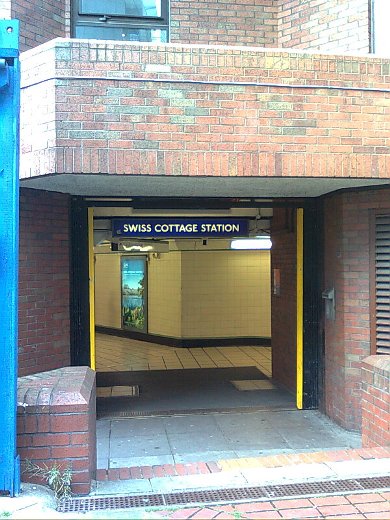
Swiss Cottage station was opened in 1939 on a new section of deep level tunnel constructed between Baker Street and Finchley Road.
|
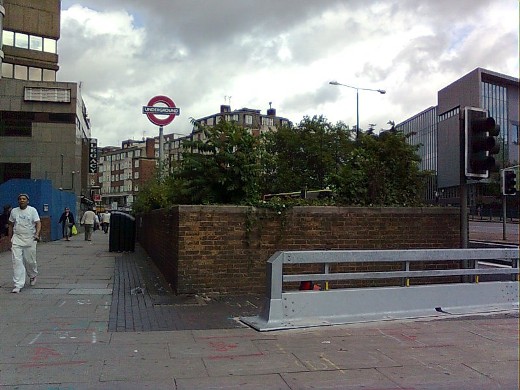
A subsurface station on the old Metropolitan line was situated over the road from today's Swiss Cottage station. It closed less than a year after the new station opened. It is thought that the two stations were connected underground. This brick structure, which surrounds a skylight that still illuminates the platform area below, is all that is left of the abandoned station at ground level.
|
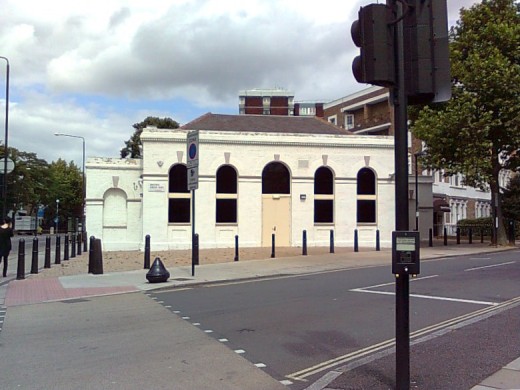
Just north of the next station stands Marlborough Road station building, another abandoned Metropolitan line station opened in 1868. It closed when St John's Wood station opened in 1939. The building is now used as a substation to provide power to the Tube.
|
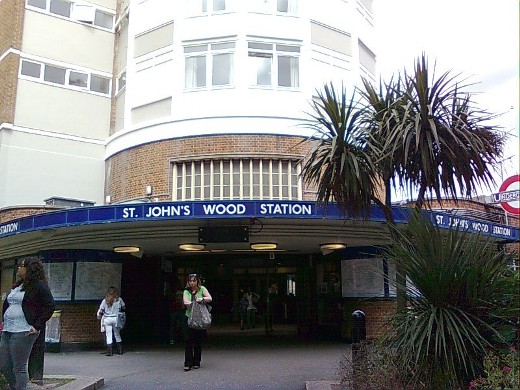
St John's Wood station, opened in 1939 on the new section of deep level line.
|
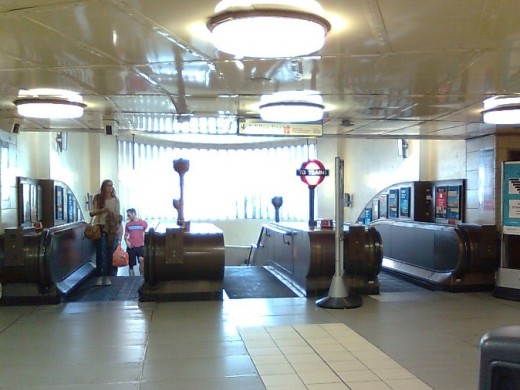
Inside the station, a view of the escalators with a central flight of steps with lighting provided by bronze uplighters with fluted stems and semicircular bowl shaped shades placed at an angle. Also shown is a very rare, original bronze-framed roundel on a stem reading 'To Trains'. A similar one at the bottom reads 'Way Out'.
|
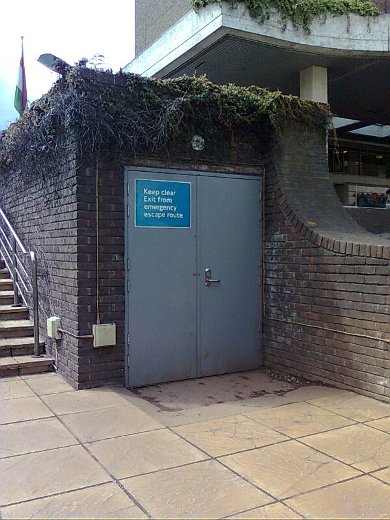
Lords station is the third abandoned station on this stretch of the old Metropolitan line, closed in 1939 when St John's Wood station opened. The door here opens onto steps which lead down to what remains of the platforms which themselves are visible from passing trains.
|
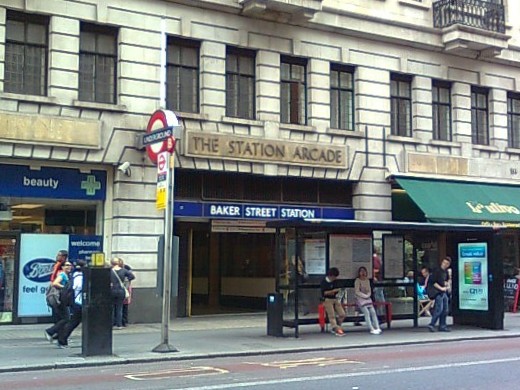
Baker Street station. The Jubilee line platforms are fully underground while the subsurface line platforms are at ground level and uncovered. The station has ten platforms, more than any other station on the Tube network.
|
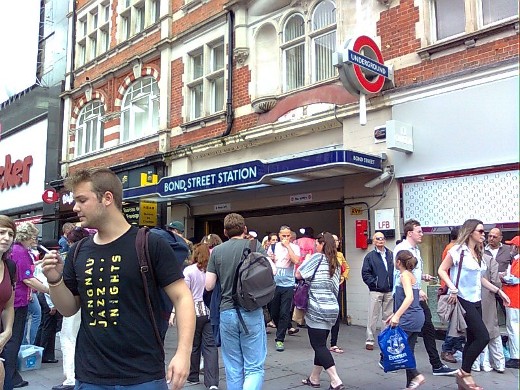
A very busy Bond Street station, opened as part of the Central line in 1900 with Jubilee line services commencing in 1979. The actual entrance to the station is below in the shopping centre.
|
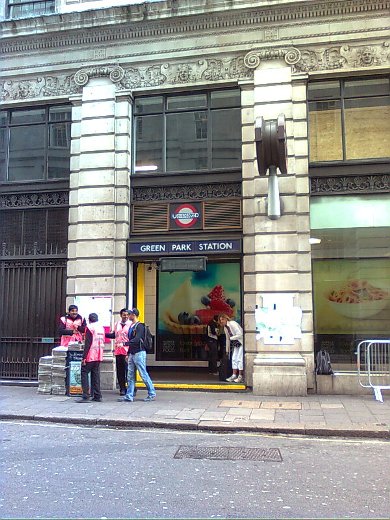
One of the entrances to Green Park station.
|
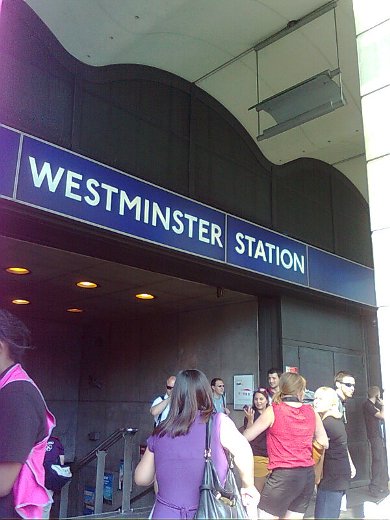
Westminster station was completely rebuilt in 1999 when the deep level Jubilee line extension was constructed. The station was already serving the subsurface Circle and District lines. The deeper Jubilee line tunnels are arranged vertically with the eastbound platform above the westbound.
|
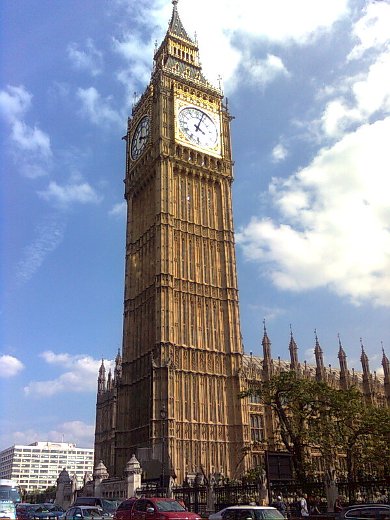
The close proximity of the tunnelling to Big Ben necessitated a complicated shoring up of the clock tower to prevent it from moving.
|
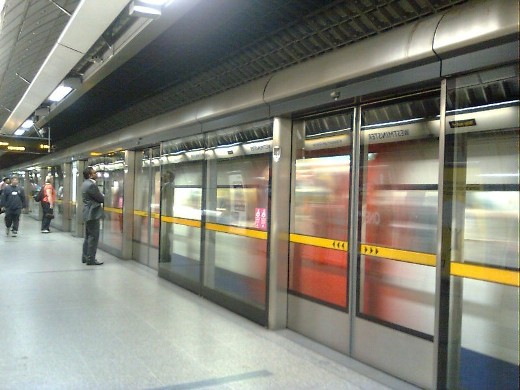
On the platform at Westminster station showing a train arriving behind the platform edge doors.
|
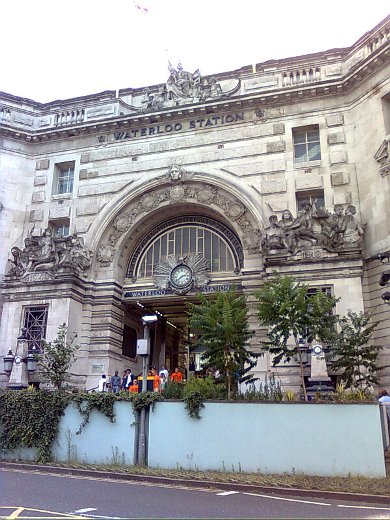
The walk to Waterloo station takes us over Westminster Bridge. Waterloo station is the busiest station on the network and the one with the most escalators, having 23.
|
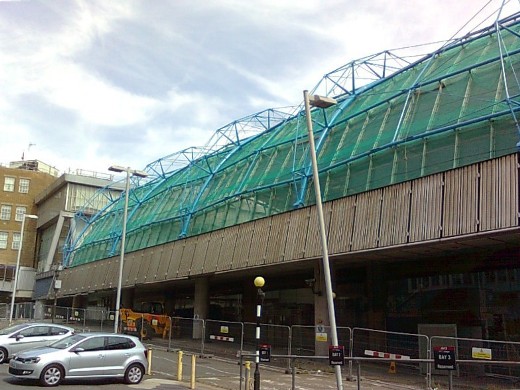
Behind the scenes at Waterloo.
|
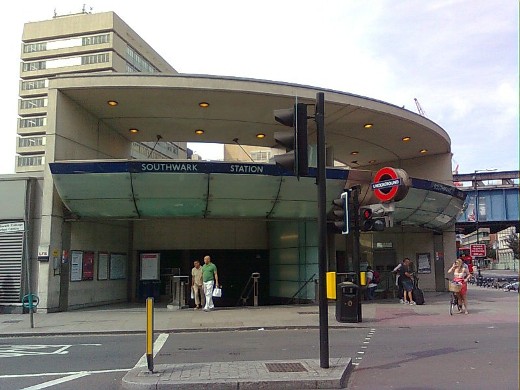
Southwark station was opened in 1999, built as part of the Jubilee line extension. It is a station on three levels with entrance to the upper level ticket hall with escalators down to the intermediate concourse and down again to the lower concourse. The station is also connected to Waterloo East mainline station.
|
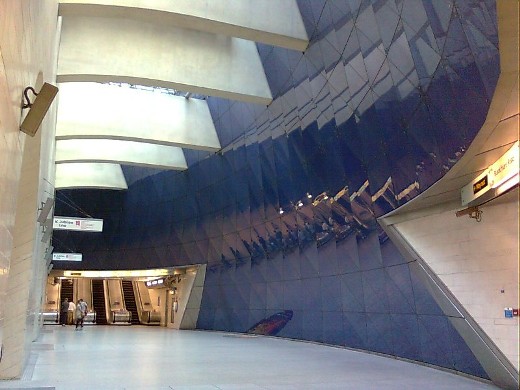
The intermediate concourse at Southwark station showing the wall which consists of 630 triangular panes of blue, enamelled glass held on stainless steel spiders. On the left the arched shaped entrances to the escalators leading down to the trains.
|
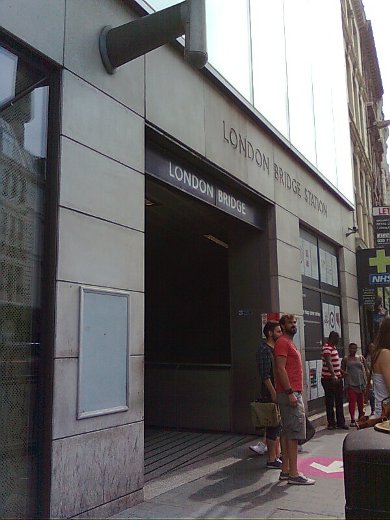
One of the entrances to London Bridge station, the only Underground station with London in its name.
|
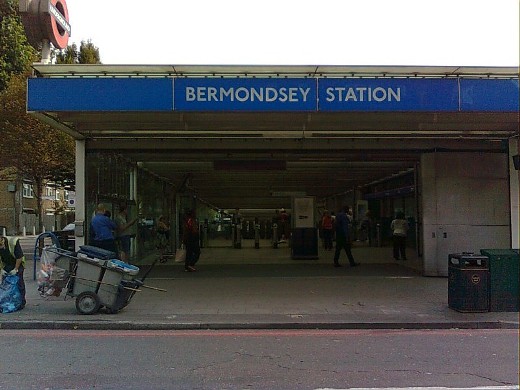
Bermondsey station. Designed in futuristic style, the inside is large and airy with high ceilings and some metal clad walls.
|
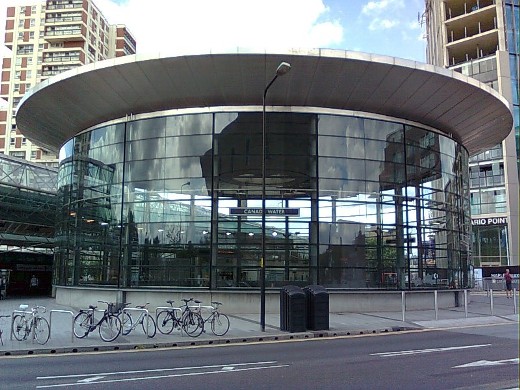
Canada Water station, the first of the Jubilee extension stations to be built. It is built on three levels with the ticket office and shops immediately below ground, the Overground line platforms 36 feet below ground and the Jubilee line platforms 72 feet down.
|
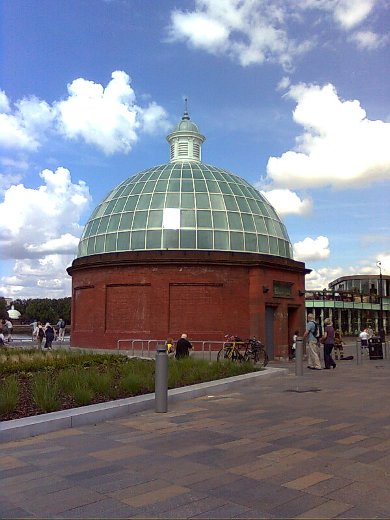
The walk to the next station takes us well away from the line under the ground and through the Greenwich Foot Tunnel, the nearest Thames crossing point for pedestrians. The tunnel was opened in 1902, is 1,217 feet in length and approximately 50 feet deep. The entrance shafts at either end lie beneath glazed domed buildings which contain a lift and a long spiral flight of stairs.
|
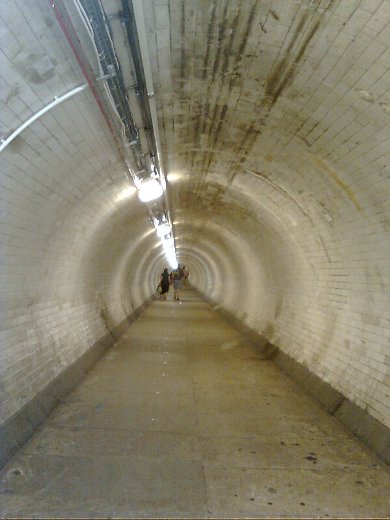
The tunnel, lined with 200,000 glazed white tiles.
|
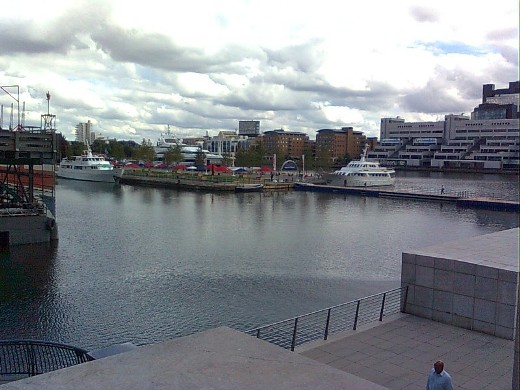
On the way to the next station through the docks area.
|
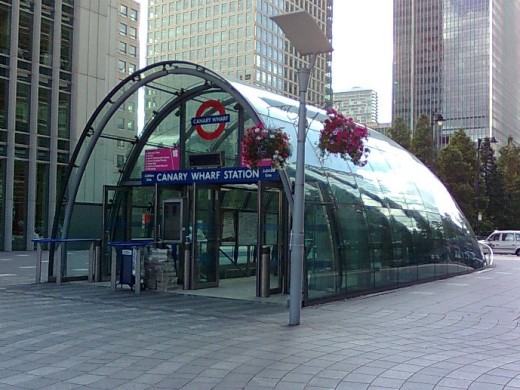
Canary Wharf station is another modern and spacious station on the Jubilee line extension. It is connected underground via shopping malls to both Canary Wharf and Heron Quays Docklands Light Railway stations.
|
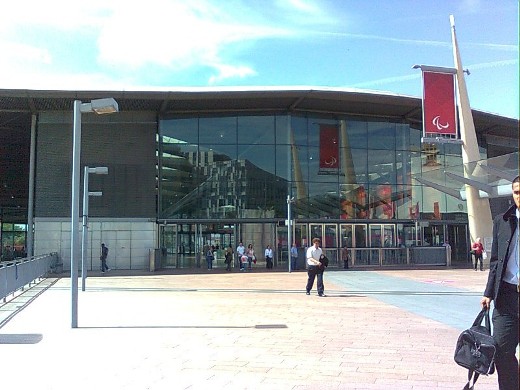
Back on the south side of the river, North Greenwich station, the name of which is hidden from view.
|
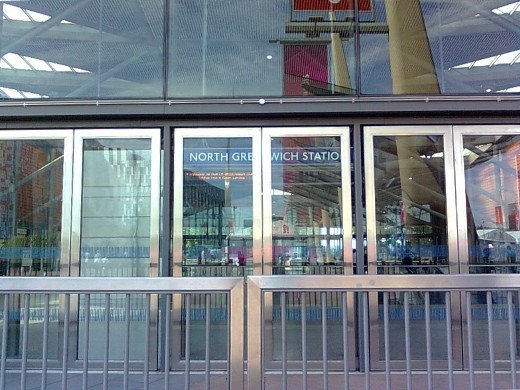
A closer view of the station entrance with the name of the station showing.
|
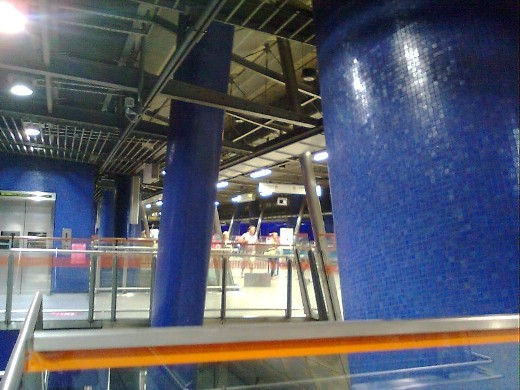
Inside the station, lots of blue tiling and metal.
|
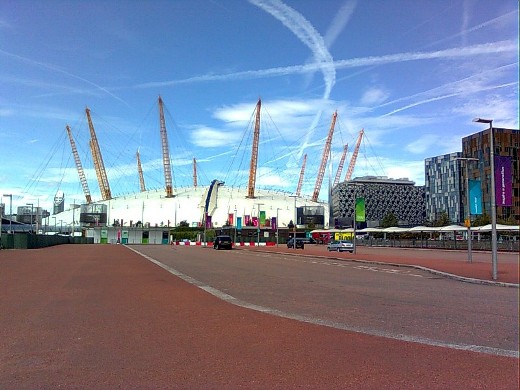
Not far off, the O2 and some interesting looking buildings beside.
|
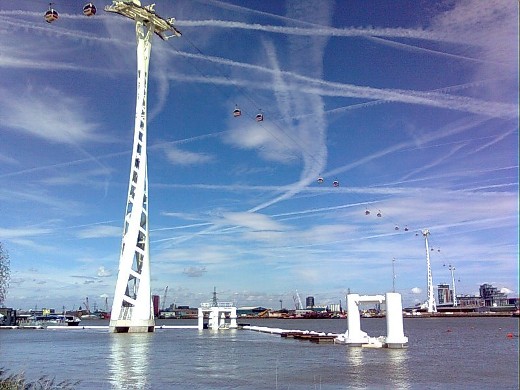
A little further on, cable cars taking people across the river. The Blackwall Tunnel is also close by and would be the quickest way to the next station but the build-up of car fumes inside makes it dangerous for pedestrians, so for the third time the walking route is through the Greenwich Foot Tunnel.
|
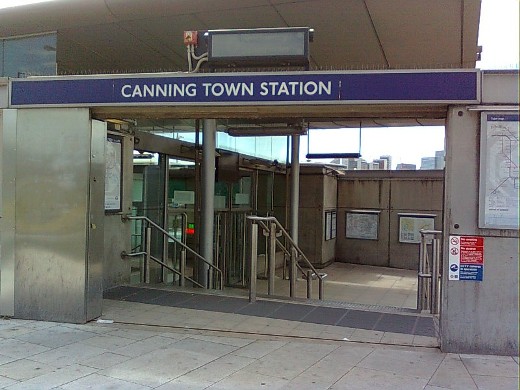
Canning Town station, another spacious and futuristic looking station with lots of metal and glass.
|
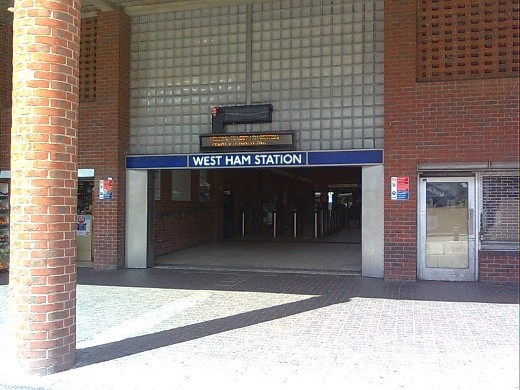
West Ham station is served by the Hammersmith & City, District and Jubilee lines along with the Docklands Light Railway and National Rail. It has eight platforms, the western lower pair, platforms 5 and 6 are used by the Jubilee line trains.
|
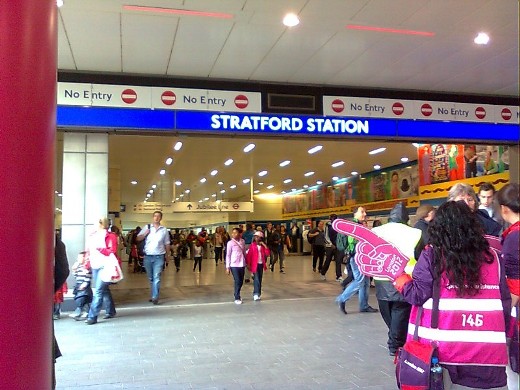
Stratford station, the terminus of the Jubilee line is also served by the Central line, the Overground, the Docklands Light Railway and National Rail. The picture shows the newer entrance inside the shopping centre. During the Paralympics it has become exit only.
|
